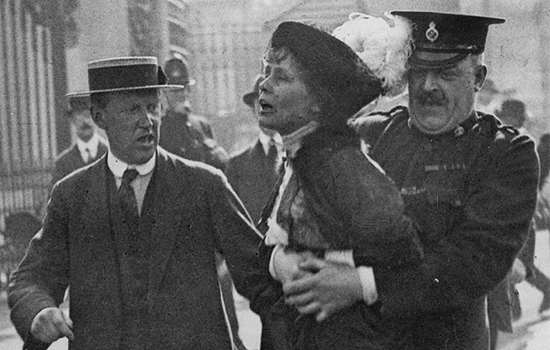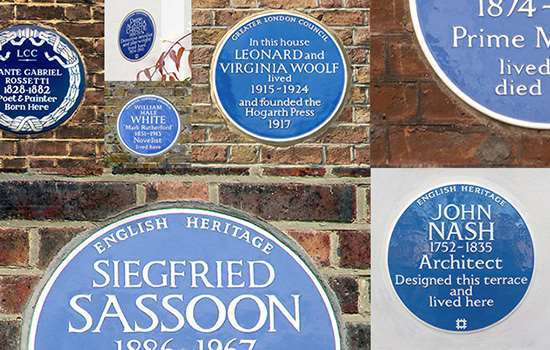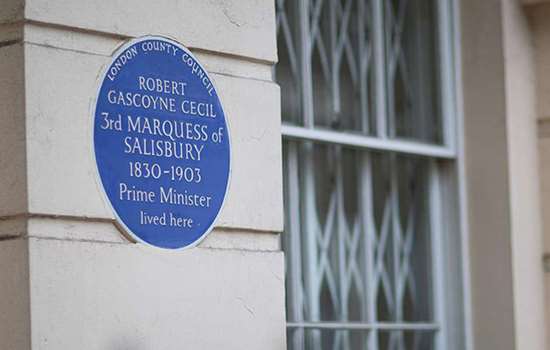SPENCER, Lady Diana (1961–1997)
Plaque erected in 2021 by English Heritage at Flat 60, Coleherne Court, Old Brompton Road, London, SW5 0EF, Royal Borough of Kensington and Chelsea
All images © English Heritage
Category
Philanthropy and Reform
Inscription
Lady DIANA SPENCER later PRINCESS OF WALES 1961–1997 lived here 1979–1981
Material
Ceramic
Lady Diana Spencer, later the Princess of Wales, is one of the most iconic figures in recent British history. Her troubled marriage to Prince Charles, now King Charles III, and later relationships were the subject of fevered and intrusive press coverage, but she won a lasting reputation outside her personal life for her extensive charity and humanitarian work. She was a patron of the Red Cross, among other charities, and worked especially to help sufferers from HIV/AIDS and leprosy, as well as campaigning against the use of landmines. Her untimely death in a car crash in 1997 prompted an unprecedented outpouring of public grief.
Her blue plaque marks Flat 60, Coleherne Court, in Kensington, where she was living just before and during her courtship with the then Prince of Wales.
LIFE AT COLEHERNE COURT
Born into an aristocratic family from the English Midlands, Diana Frances Spencer attended a Swiss finishing school before moving to London in 1978. The flat at Coleherne Court was found for her by her sister Sarah, who was working for an estate agent at the time. It was bought with a bequest from her maternal great-grandmother in July 1979 – the year she turned 18 – and cost £50,000. She furnished the flat ‘in a warm but simple Habitat style’ and lived here for around 18 months.
During her time at Coleherne Court Diana held various part-time jobs, which included working as a nanny for an American family named Robertson, teaching at the Young England kindergarten at St George’s Square, Pimlico, and working as a cleaner for her sister. Like many people of her age, she embarked on some schemes that went nowhere: in January 1979 she signed on as an apprentice dance teacher, but did not complete the course.
Diana lived with three flatmates: her old schoolfriend Carolyn Pride (later Bartholomew), as well as Sophie Kimball and Philippa Coaker, whose places had been taken by Virginia Pittman and Anne Bolton by the time her relationship with Prince Charles was under way. They were each charged £18 a week and Diana organised the cleaning rota: her status as landlady was reportedly emphasised by a sign saying ‘chief chick’ on her bedroom door. She later recalled her time there fondly:
It was nice being in a flat with the girls. I loved that – it was great. I laughed my head off there. I kept myself to myself. I wasn’t interested in having a full diary. I loved being on my own, as I do now – a great treat.
Despite journalists branding the young Diana ‘Disco Di’, her life at Coleherne Court was in fact fairly retiring. Reading and watching television were her main leisure activities, and apparently at this time she neither smoked nor drank.
ENGAGEMENT TO THE PRINCE OF WALES
Diana first met the Prince of Wales, whom she had long idealised, at a shooting party in November 1977, but their courtship began in earnest from July 1980. Charles proposed on 6 February 1981, to the great excitement of her three flatmates: ‘Everybody screamed and howled and we went for a drive around London with our secret’ – presumably in the Mini Metro she then owned. For a time this made 60 Coleherne Court, in the words of Diana’s biographer Andrew Morton, ‘the most famous address in Britain’.A phalanx of press photographers attempted to photograph her on her way in or out of the building (sometimes with success) or through her bedroom window via a vantage point in Brompton Library, which lies directly opposite. Diana paid tribute to her three flatmates at the time for their support in the face of this siege.
Diana left Coleherne Court immediately following the announcement of her engagement on 23 February 1981, and the flat was then apparently sold by her mother. After a brief stay at Clarence House, Diana moved into a suite in Buckingham Palace, and she married the Prince of Wales that July at St Paul’s Cathedral.
Nearby Blue Plaques
More About Blue Plaques



